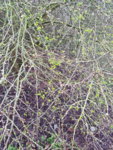"Too early" is when you make the judgment that winter is over, you dig a tree only to get two weeks of freezes in March and late frosts into mid-April. Up here in N. Va. that is a real danger. I have learned NEVER to make the mistake of assuming winter is over just because we get a week or two of 60-70 degree days in late Feb. and March. I typically start collecting in mid-March, but keep a cautious eye on the forecast. I have moved ALL my trees inside in late March more than a few times as temperatures toppled into mid-low 20s in late March for days.
I have learned that asking "when is it too early" usually means IT'S TOO EARLY...
Opened this to learn / read and to thank
@Joe Dupre' for asking as it's been on my mind, at this time of the year I'm keenly aware of where in the year I am on temp/daylight/everything and eager to collect (have already gone actually) but you're certainly not wrong here, I'd bet anything that, say, if you were collecting dormant trees and plotting success-% against day of the year, that it'd go up with a peak
right before bud-break (a day? a week? no idea....my 'true optimal' is going to be earlier than yours, mostly because of my temperature but partly the humidity which seems to help
everything except bark-retention lol) at which point your success% starts going down again. I collected BC's last year that I lost, though at the same time my 1st & 2nd collections (of 5, so I batted under 50%, ouch..) were collected Feb 2nd and the 8th, and both showed bud-swell (still under the trunk, but distinct enough that it's obvious) at like 1wk and 1.5wks, with visible budding (ie
some green) in under 2 wks on my first-collected (feb 2nd) of the year....it's just a bigger gamble the earlier you do it, no matter what the transplant & the chop seem to force back-budding to begin so it's really a question of whether growth is sustainable isn't it? My established Crapes are dormant/leafless in a low-wind area, yet I have 2 fully-leafed, and still popping buds a couple times a week, specimen that were 'now or never' collections and they're just doing their thing and I can only imagine I'll get a great year out of them
but this year I'm ready for any cold-threats, 'cold frame'-ish setup and patio and a ~10' tall, yard-wide hedge I grew this past year to act as a wind-buffer for my garden

[then a freak snow-storm comes on Mar. 13th and kills 1/4th of my trees and I'm wishing there wasn't a timer on editing posts LOL

]
Going early can get you growing early, it can also kill trees so the later, the better is definitely the best default/yardstick.

